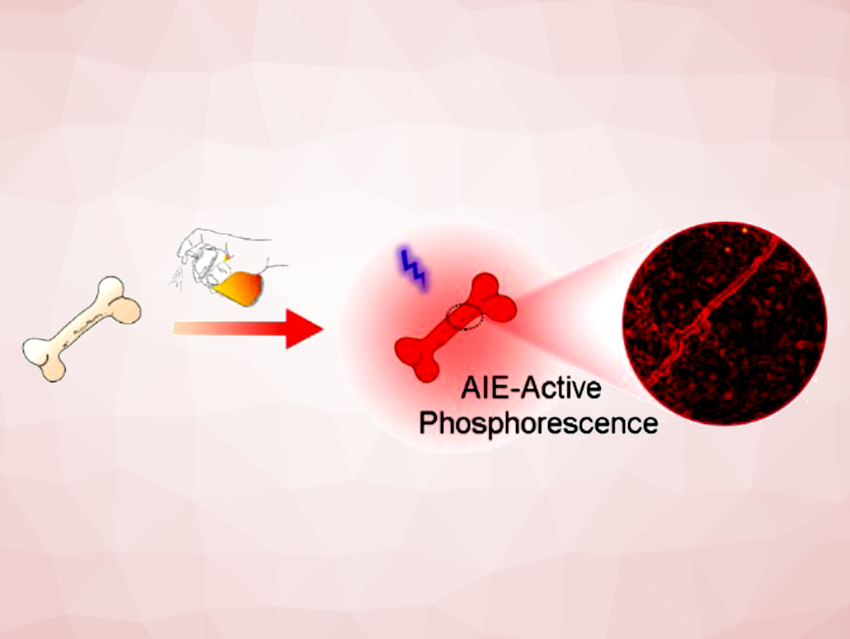The fluorescent analysis of bone structures at the microscopic level can provide valuable insights into the structure and function of bone tissue. This can contribute to understanding the mechanisms of bone growth, development, and remodeling, as well as the processes involved in bone diseases such as osteoporosis or osteogenesis imperfecta. However, conventional dyes can suffer from drawbacks such as low specificity for bone tissue, short fluorescent lifetimes, and an aggregation-caused quenching (ACQ) effect that results in low efficacy and artifacts. Iridium(III) complexes with aggregation-induced emission (AIE) features could be useful for addressing these challenges.
Shichang Liu, Guanying Li, Xi’an Jiaotong University, Shaanxi, China, Li Xu, Guangdong Pharmaceutical University, Zhongshan, China, and colleagues have designed an AIE-active iridium(III) complex (Ir-BP2, pictured below) as a highly selective, convenient, non-destructive, dual-mode staining agent for bone analysis. Ir-BP2 contains phosphonate groups that selectively bind to hydroxyapatites, the main component of bone matrix, and exhibits turn-on AIE phosphorescence with a prolonged lifetime.

The team prepared a ready-to-use staining spray containing Ir-BP2. Fluorescent imaging and lifetime imaging with Ir-BP2 staining can provide valuable insights into bone microstructure, microdamage, and growth state. In addition, Ir-BP2 was successfully applied on a human spine vertebra for diagnosing the bone invasiveness of eosinophilic granuloma, a type of bone tumor. Overall, the work could lead be useful for the development of new approaches for the diagnosis and treatment of bone-related diseases.
- Bone analysis using an aggregation‐induced emission‐active iridium complex,
Xianpeng Zhang, Xinling Liu, Hongwen Yu, Shuang Shen, Junchao Zhi, Zhen Gao, Jingqi Xin, Jiaqi Song, Liang Shao, Caiting Meng, Feifei An, Taotao Huo, Shichang Liu, Ye Zhang, Li Xu, Guanying Li,
Aggregate 2023.
https://doi.org/10.1002/agt2.381




